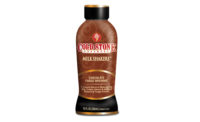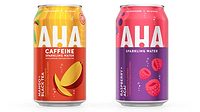2015 State of the Beverage Industry: Bottled water continues to rise
Sparkling water segment leads category growth






Americans’ consumption of water has increased by more than 68 million 8-ounce servings in less than a year, according to research conducted by the Natural Marketing Institute (NMI), Harleysville, Pa. The study evaluated 60,000 U.S. adults and their average daily intake of unflavored water — including bottled, tap and filtered water — between the fourth quarter of 2013 and the second quarter of 2014.
This increase is partially attributed to a general consumer trend toward healthier beverages, NMI notes. It also attributes the increasing water consumption rate to efforts such as the Partnership for a Healthier America’s (PHA) Drink Up initiative. In fact, the Drink Up advertising campaign resulted in a 3 percent increase in incremental bottled water sales among consumers who had been exposed to the campaign, according to a study by Nielsen Catalina Solutions, Cincinnati. This equates to nearly $1 million in incremental retail sales of bottled water.
As the economy picks up, consumers continue to increase their purchases of bottled water, states a May 2014 “Bottled Water in the US” report by Euromonitor International, Chicago. Despite flat to declining sales last year, the convenience still bottled water segment increased 5.6 percent in dollar sales and 4 percent in unit sales in U.S. multi-outlets during the 52 weeks ending May 17, compared with the prior-year period, according to Information Resources Inc. (IRI), Chicago.
The still bottled water segment is projected to grow 1.8 percent each year in U.S. retail stores through 2018, notes Packaged Facts, a Rockville, Md.-based division of Market Research Group LLC, in its April 2014 “Bottled Water in the U.S.” report.
Despite growth in the convenience still bottled water segment, it currently lags behind the overall bottled water category — made up of convenience still water, sparkling water and jug/bulk water. The total category grew 6.9 percent in dollar sales during the 52 weeks ending May 17, compared with the prior-year period, according to IRI data. In particular, the jug/bulk water segment increased 5.6 percent in dollar sales, and the sparkling water segment rose 18.1 percent in dollar sales during the timeframe, compared with the prior-year period, IRI reports.
According to Mintel’s March 2014 “Bottled Water and Cold Beverages Mixes – U.S.” report, 65 percent of its survey respondents said that low price is an important factor when choosing a bottled water. For this reason, tap water and private-label bottled water consumption continues to grow, Mintel notes.
In contrast with the demand for low pricing, consumers have shown a willingness to pay a premium for bottled waters that are perceived as having greater health benefits, where they might not do so for plain still water, according to a March report titled “Bottled Water Production in the US” by IBISWorld Inc., Los Angeles. As still bottled waters expand into various types of water classifications, such as spring, purified, mineral, artesian, alkaline and more, they have the ability to appeal to a broad range of consumer preferences, it notes.
However, bottled water growth might be disrupted as the at-home carbonation machine segment expands and consumers have the ability to make flavored waters at home, according to Packaged Facts’ report. The market research firm offers the upcoming Keurig Cold beverage system from The Coca-Cola Co. and Keurig Green Mountain, Waterbury, Vt., as an example. The Keurig Cold system is scheduled to hit retailers in Keurig’s fiscal-year 2015 and will allow consumers to make The Coca-Cola Co.’s full range of still and carbonated beverages at home as well as a full line of Keurig Green Mountain brands.
Although convenience still bottled waters account for the majority of the bottled water category, sparkling water remains the fastest-growing segment and will continue to be through 2018, according to Mintel’s report.
This year, IBISWorld expects total category revenue to increase 1.7 percent. Next year, it forecasts the category to increase 2.4 percent, it adds.
Looking for a reprint of this article?
From high-res PDFs to custom plaques, order your copy today!








